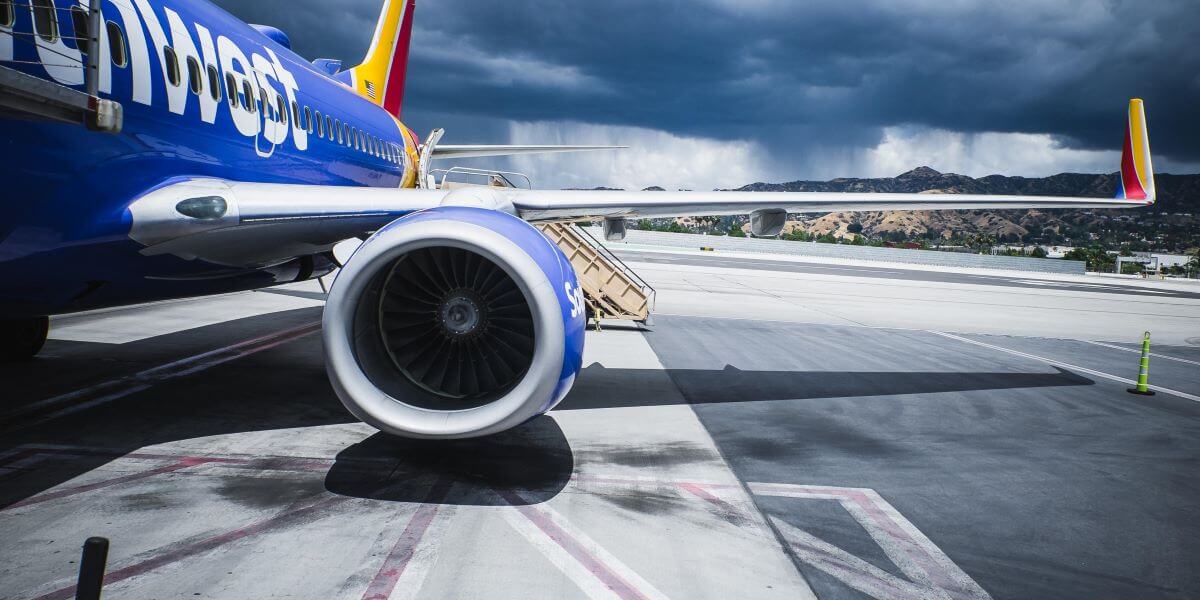10 free actionable tips to improve your operations
As fuel costs keep representing between 25 and 40% of total operating costs, every airline around the globe should have launched a Fuel Efficiency project or should be planning to do so soon.
Competition is fierce in today’s commercial aviation, with more than a thousand airlines around the world willing to find and secure their place in the market. Flying smart and being highly efficient is not an advantage anymore, but a requirement to stay afloat within such a demanding environment.
In this article, we provide you with ten actionable and useful tips to increase the efficiency of your operations:
1. Be always ahead of your aircraft
As Lord Kelvin said more than 100 years ago: “You cannot improve what you cannot measure.” If you are behind your aircraft and do not have full knowledge of when and how fuel is burnt, it will be impossible to know when and how fuel can be saved.
Being ahead of your aircraft means having absolute control of your operations and being able to act instead of reacting.
The only way to do so is by monitoring the operations, and having an automatic and efficient way to treat, analyze, and display all this data. Therefore, implementing a Fuel Efficiency system should be the first step in any Fuel Efficiency project.
2. Set the mindset, and make sure it puts down roots!
We can see that increasing efficiency was in almost every airline’s annual report last year. A company can only achieve this goal by a team effort, ensuring that everyone is on the same page and pushes in the same direction. Setting the mindset is the key to success, and communication is the way to get there.
Of course, efficiency must never compromise safety, but both must coexist and complement each other. Think about it: a flight that burns less fuel automatically gives you an added safety margin.
3. Keep your fleet light and shiny!
Some whiskey bottles (and other in-flight duty-free products) have traveled around the world more times than any of us ever will. Carrying unnecessary weight on the aircraft costs millions of US dollars to airlines around the globe every year. Ensure that only essential items are flown and leave the rest on the ground.
Also, everyone knows that a clean aircraft is an efficient aircraft. Plus, it just looks better when it’s shiny!
Engine washes and airframe riggings must be properly scheduled not to affect your operations. Regarding their periodicity, a cost & benefit analysis must be done to decide how often they must be done to reach maximum savings with minimum costs.
4. Each airport is different, so should be their taxi fuel
Do you use the same Taxi Fuel for all airports in your Flight Plan? If not, how often do you update them, and how do you determine each value?
Using a statistical approach based on historical data is key to define which quantity of Taxi Fuel is required for each airport. Not planning enough Taxi Fuel will compromise flight safety, while planning too much will make your aircraft burn more fuel and become less efficient.
5. Aircraft are meant to fly, but make sure to monitor them also on the ground
Even if we all try to reduce as much as possible the time our aircraft spend on the ground, the time and fuel spent on turnarounds and other ground activities are significant and deserve being monitored.
Auxiliary Power Unit (APU) is usually responsible for most of the fuel consumption on this part of your operations. There are several ways its consumption and cycles can be monitored: through ACARS messages, by extending Flight Data Recorder operation, etc.
Being able to monitor, control, and minimize the APU usage at ground operations is critical and can have a big impact on the efficiency of your operations.
6. Learn from the past, use it to improve the future!
Did you know that a deviation of only 1 ton in your Zero Fuel Weight (ZFW) estimation can result in a fuel overburn of 100kg in a standard long-haul flight?
Of course, having accurate last-minute figures about passengers and cargo on-board is crucial to plan a flight with a precise ZFW estimation. However, this is difficult to achieve due to operational and technological challenges. Therefore, using historical ZFW data and applying a statistical approach might be today the most accurate and state-of-the-art solution to improve your ZFW accuracy.
Keep track of your performance on ZFW estimation and use past flights to improve the efficiency of the future ones!
7. Work together with ATC; efficiency is our common goal
Air Traffic Control (ATC) plays a big role in the efficiency of our operations. Their primary goal is to ensure and enforce high safety standards in civil air traffic. Nonetheless, their guidance affects flight efficiency as well:
- Granting a direct route (shortcut) to a further waypoint during the Cruise phase
- Avoiding holding patterns or flight level restrictions that might cause flights to perform linear steps
- Allowing and enforcing the usage of shorter approach techniques: GPS, RNP-AR, etc.
Collecting data from your operations and automatically tracking fuel savings and potential savings resulting from these procedures will help you deal and communicate better with ATC.
Work closely with ATC, especially in your hub(s). Efficiency is a common goal, and improving operations is a win-win scenario.
8. Make use of the latest technology to shorten your tracks
Even when ATC facilitates certain procedures, most of them must be proactively requested.
Do you know which are the most cost-saving directs that can be requested by pilots on each of your routes? And how much fuel can you save on each of them?
One more time, having a clear and data-based picture of your operations is the only way to smartly decide which actions must be taken to reduce your fuel consumption.
9. Find the right spot to balance your fuel and time costs, define an optimum Cost Index
There is an obvious trade-off between fuel and time costs. Both factors counteract each other, but they do not do it on a linear (simple) way. Plus, their relationship will vary on each route and aircraft type.
Finding the optimum Cost Index value for each flight will also reduce your operations costs. This is just another example of how data science can help to optimize your flight operations.
10. Spread the word!
Finally, none of the items above will be useful if we fail in its implementation. Communication is key to any change management project, and using technology is the smartest way to do so.
SkyBreathe® Fuel Efficiency features will help you share data and dashboards with other stakeholders in the company. Plus, its app for pilots (called MyFuelCoachTM) will allow you to instantly and effortlessly reach out to all crews, so everyone is aware of current performance and future targets.
----
In an era driven by data science and smart technology, digital transformation is the only way to succeed. Today, new-generation aircraft produce terabytes of data every year. Processing and monitoring this data can provide your airline with priceless insights that will help you fly smarter and more efficiently.
SkyBreathe® Fuel Efficiency currently processes millions of flights every year around the globe. Its user-friendly interface will give you access to all this data in a single, ready-to-use cloud solution.
Use this data to improve your operations, and make sure to be the smartest fish in the pond!
READ MORE
You want to learn more about how to determine your Fuel Efficiency Management System requirements:




